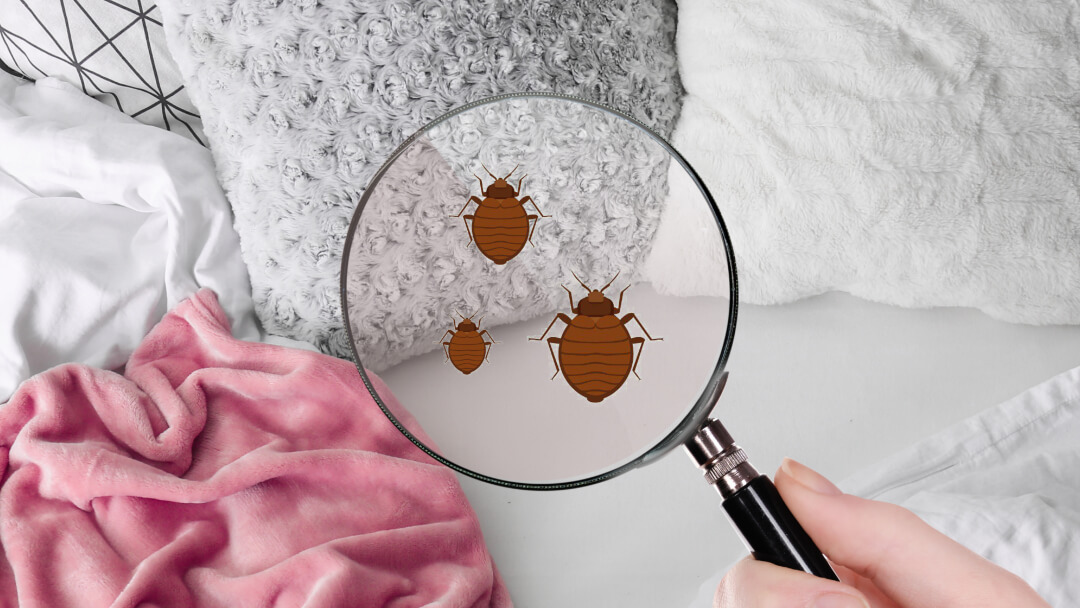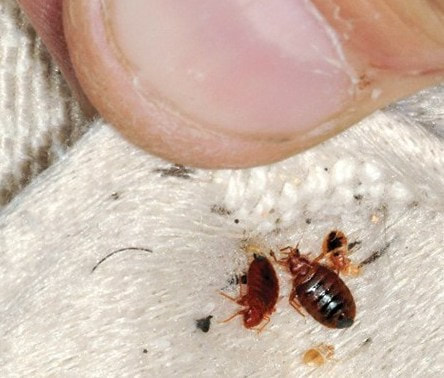Certified Bed Bug Exterminator Near Me: DC Heat Treatment Specialists
Certified Bed Bug Exterminator Near Me: DC Heat Treatment Specialists
Blog Article
Checking Out the Science Behind Bed Pest Warm Treatments as a Lasting Insect Management Method
In the realm of parasite administration, the quest for lasting and effective solutions stays a constant pursuit. One such approach that has obtained traction in the last few years is the use of warm therapies to deal with bed insect infestations. By taking advantage of the scientific research behind thermal death factors for these persistent parasites, warm treatments supply a promising option to typical chemical-based methods. The intricacies of exactly how warmth effectively gets rid of bed bugs and the more comprehensive effects for sustainable insect administration techniques make this a subject worth checking out better.
Bed Pest Heat Treatment Process

Thermal Fatality Point for Bed Pests
Subjecting bed pests to elevated temperature levels beyond their thermal resistance range is crucial for attaining effective elimination in heat therapy procedures. The thermal death factor for bed bugs refers to the temperature at which these parasites can not endure. Research study indicates that bed pests start to perish when exposed to temperature levels above 113 ° F(45 ° C) for a sustained duration. As the temperature level enhances, so does the death price of bed pests. At around 118 ° F(48 ° C ), bed insects start to pass away rapidly, with a mortality price of virtually 99% within minutes of exposure. This demonstrates the sensitivity of bed insects to high temperature levels and highlights the effectiveness of warm therapies in eliminating invasions. By getting to and keeping temperatures above the thermal fatality factor for bed pests, insect administration specialists can ensure extensive elimination of bed pest populations, including hard-to-reach areas where chemical treatments might be much less effective. Understanding the thermal death point for bed insects is vital for carrying out effective warmth treatment strategies and achieving sustainable insect administration outcomes.
Benefits of Warmth Treatments
Having developed the important thermal death point for bed pests, it is critical to now discover the considerable benefits that warmth treatments supply in efficiently getting rid of these resilient bugs. One of the primary advantages is that warmth can penetrate deep into splits and crevices where bed pests conceal, guaranteeing that even the most hard-to-reach locations are warmed to lethal temperatures.
In addition, warmth treatments are ecologically pleasant and safe, making them a sustainable insect administration method. Unlike chemical pesticides, warmth therapies do not leave hazardous residues that can present threats to human health or the setting. This facet is specifically important in sensitive environments such as health centers, colleges, and suburbs where chemical usage may not be preferable.
Furthermore, heat treatments have a high success rate in eliminating bed pest problems in a solitary therapy, reducing the need for numerous gos to and lessening interruption to residents. This efficiency not only saves time and cash however likewise offers comfort to those handling bed bug troubles.
Performance of Warmth Therapy

Warmth therapies have the added advantage of eliminating bed bug heat treatment bed insect eggs, which are usually immune to conventional chemical therapies. On the whole, the performance of warm therapies in getting rid of bed bug infestations makes them a reputable and lasting parasite management strategy.
Sustainable Insect Management Advantages
Applying lasting bug administration practices supplies lasting benefits for both the environment and public wellness. By using methods such as heat therapies for bug control, we can decrease the reliance on hazardous chemical pesticides that can have adverse results on ecological communities and human health and wellness - DC exterminator. Sustainable parasite administration strategies aid in protecting biodiversity by targeting specific insects without harming non-target microorganisms, thereby keeping a balanced ecological community
In addition, sustainable parasite administration practices add to the overall health and wellness of the general public. By lessening direct exposure to harmful chemicals made use of in conventional parasite control techniques, warmth treatments offer a safer option for parasite administration in household, commercial, and public areas. This decrease in chemical usage likewise aids in avoiding chemical residues from polluting dirt, air, and water, safeguarding environmental top quality.
Conclusion
To conclude, bed bug warm therapies have been shown to be a efficient and lasting parasite management technique. The thermal fatality point for bed insects makes them prone to warmth therapies, which have numerous advantages over standard chemical therapies. The performance of heat treatments in getting rid of bed insect problems while decreasing environmental impact highlights the capacity of this approach as a sustainable service for bug control.
The bed insect warmth treatment process includes elevating the temperature level within ravaged locations to a level that efficiently gets rid of bed insects and their eggs. By getting to and preserving temperatures above the thermal death point for bed bugs, pest monitoring specialists can ensure thorough removal of bed pest populaces, including hard-to-reach areas where chemical treatments may be less effective. One of the key benefits is that warm can permeate deep into cracks and holes where bed pests hide, guaranteeing that even the most hard-to-reach locations are warmed to deadly temperatures. Unlike chemical treatments that might leave behind immune populations, heat therapies offer a safe and ecologically friendly option that can penetrate deep into furnishings, walls, and various other hard-to-reach locations where bed pests hide.
The thermal fatality factor for bed insects makes them at risk to warm treatments, which have various benefits over typical chemical treatments.
Report this page